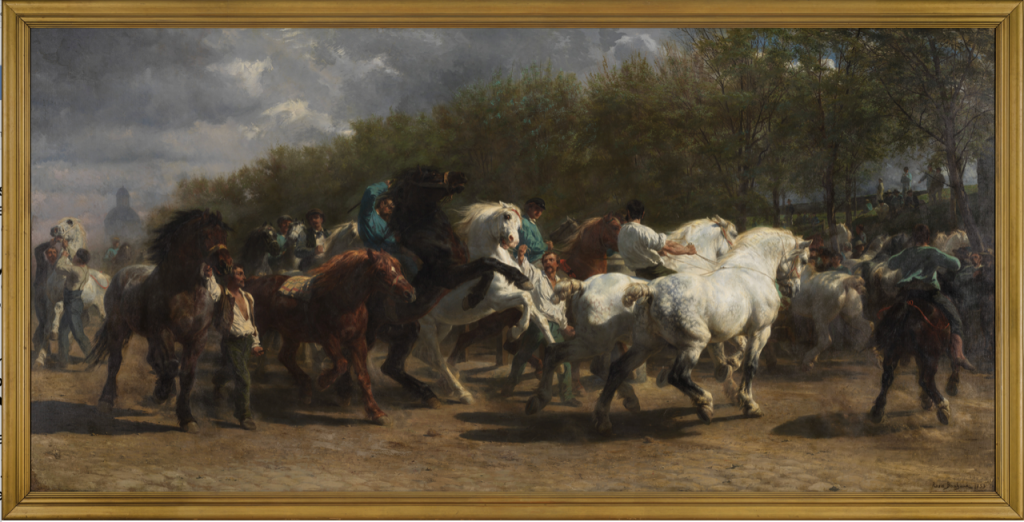
Natalie kept the canvases stretched, the cows turned out, and the correspondence answered; she handled merchants, visitors, dealers, and admirers, including Impératrice Eugénie (1826–1920), wife of Empereur Napoléon III, whose last official act as regent, in 1865, was to personally pin the Chevalier cross of the Légion d’honneur on the blouse of “the first female artist to receive this prestigious distinction.” Rosa was promoted to Officier in 1894 by President Sadi Carnot.
Natalie’s death in 1889 was a devastating blow to the artist, suddenly alone in her atelier full of antlers and stuffed birds, and her countless studies, sketches, and photographs of her subjects, in woods and fields or zoological gardens. Her studious visits to slaughterhouses had allowed her to receive an official permission de travestissement to wear men’s clothes, which then became a lifelong habit at home.

Rosa’s first submission to the 1841 Paris Salon, an oil of two rabbits, got her foot in the door. Ironically, her father’s Saint-Simoniens were among her first buyers. Rosa’s 1848 submission, of a herd of distinctively colored Cantal cattle in the Massif Central led to her first government commission. Next year’s Plowing in the Nivernais, embodying the dignity of rural labor, won First Medal at the 1849 Paris Salon, and was widely disseminated as a print. The painting, now in the Musée d’Orsay, made Rosa famous. But it was the sale of her monumental oil, The Horse Fair, that made her rich—rich enough to purchase Château de By.

Although widely praised at the 1853 Salon, this gala of Percheron and other draft horses of every color, in every possible attitude, remained unsold. It was sent to Ghent and Bordeaux to drum up a buyer, again without success. Then, in 1854, the savvy London art dealer and publisher of Rosa’s prints, Ernest Gambart, bought it and put it on tour across the country, including Buckingham Palace. Subsequently feted, bought and sold several times, in 1887 Cornelius Vanderbilt finally purchased the 8-foot x 16-foot work, and immediately donated it to the Metropolitan Museum, where it is still captivates every visitor.
Brooke Chilvers would like to remind that the Château de By, near Fontainebleau, today is a full-time museum devoted to the life and work of Rosa Bonheur. www.chateau-rosa-bonheur.fr/en
